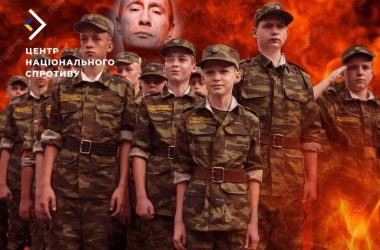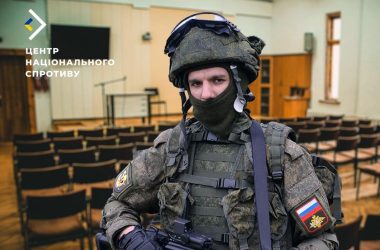In the temporarily occupied territories, Russians are trying to increase their influence using various methods of manipulating the minds of the local population. Youth is one of the key target audiences to which all efforts are directed.
The occupation authorities are making significant efforts to gain credibility among young people, as they are the future of society and can be involved in supporting pro-Russian ideas in the long run.
Let us highlight the main areas of influence on the local population by the occupation regime:
Ideological influence and education.
One of the main tools of influence on young people in the TOT is ideological education through the educational system. The occupation administration is changing the curriculum, introducing Russian narratives and national propaganda. Historical events are distorted in such a way as to create an image of Russia as a “liberator” and “defender” among young people.
This information policy is aimed at fostering a positive attitude towards the invader and its actions in Ukraine among young people. In addition, the Russian authorities are introducing compulsory study of the Russian language and literature, reducing or eliminating the Ukrainian language from the educational process. This is done to assimilate young people and further integrate them into the Russian cultural and educational space.
Military and patriotic education.
This is one of the main aspects of the occupation authorities’ planning and work with the young population. Thus, under the guise of patriotic circles, sections and clubs, the invaders involve young people in military training, teach them the basics of military affairs, and promote the idea of defending the “homeland.” This gives young people a sense of belonging to something bigger than themselves and, at the same time, contributes to the militarization of society. In addition, the Russian side is trying to hold various celebrations related to the “heroism” of the Russian army to instill in the minds of young people the idea that military strength and loyalty to Russian ideology are the highest priorities and values.
Socio-economic measures.
The occupation authorities also use socio-economic levers to gain the loyalty of young people. They offer various benefits, such as scholarships, benefits, and employment in the occupation structures, especially for those who show favor to the occupation authorities. This creates the illusion of stability and improved life, which is especially attractive to young people seeking material security. Another aspect is the integration of young people into Russian social programs, including participation in cultural and sporting events funded by the Russian side.
Problems and challenges.
Despite all attempts to influence the local population, the occupation authorities fail to gain the desired authority among young people. As young people often realize the manipulative nature of these events and look for alternative sources of information, including the Internet and social networks. It is also important to note that most young people still feel connected to Ukraine and support Ukrainian culture and identity.
To summarize, the occupation authorities in the TOT use a variety of methods to gain credibility among the younger generation. Through ideological education, military-patriotic programs, and socio-economic measures, they are trying to integrate young people into the Russian political, economic, and legal space.
However, all these efforts are not always successful, and Ukrainian youth continue to look for ways to preserve their identity and connection to Ukraine.
You can stop the policy of the Russian invaders and their collaborators by publicizing their crimes and demanding their international prosecution. You can also participate in rallies in support of Ukraine or donate to the Ukraine’s Armed Forces.





